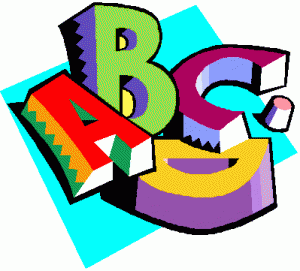 Tip 70 – Play with letters, but keep it simple!
Tip 70 – Play with letters, but keep it simple!
With 26 letters placed back-to-back from A to Z, you can have 13 letter cards. Use either 3”x5” index cards or the 5”x8” size and place on them stick-on letters that you can get in an office supply store.
If you hole-punch each one and add a yarn loop, your child can hang them. If you keep them just plain, you have all different kinds of card game options open to you, even hiding them. If you just want to trace your fingers around the textured letters, be sure to follow the same motion you would if you were going to write it. Great fun is to find objects that match like “D for Door Knob” of “K for Kitchen.” Try “B on a Book” and “T on your Table.”
Parenting Insight…
How special it is to have a “homemade” toy that you can use in many different ways to teach your child the letters. If you tried this kind of teaching before in a more formal way, now you have the simplicity of 13 cards to use and enjoy in your own creative way. Fun and learning is an amazing combination!
A Bouquet of Positive Feelings!
Play your own game of alphabet flowers. Lets’ start…
A is for Azalea
B is for ?????. Hard to think of ones like Begonia, Buttercup, or Birds of Paradise? No matter! Use more common flower-like words like Bud, Blossom, and Beautiful
C is for Chrysanthemums
D is for Daisies
NOTE: Play has no real rules. The only parameters are the ones you make up and enjoy.



love this great ideas Sally..
My favorite toy of my kids for years was a big box…
Hi Ava,
Thank you for stopping by. It is so important for parents to return to hands-on interactive play. That is the only kind that keeps a young child’s brain growing in all the ways it should.
Dr. Sally,
What great ideas you have! I have shared on my facebook wall! Also, I adore your disclaimer at the end: “Play has no real rules.” Awesome!
Wendy =)
Hi Wendy,
Thank you very much. Remember when the National Academy of Pediatrics recommended not letting children under the age of 2 watch TV? I was starting to think today that they ought to make some similar kind of statement about computers. Off the top of my head I would suggest not under the age of three. During those formative years the brain develops at an extremely rapid rate, a kind of development that is based on interactive language and movement. It only makes sense that too much computer play, which could seem productive in one way, could in another, cause significant learning deprivation. Free-form play and all the creativity that goes along with it are an absolute necessity.